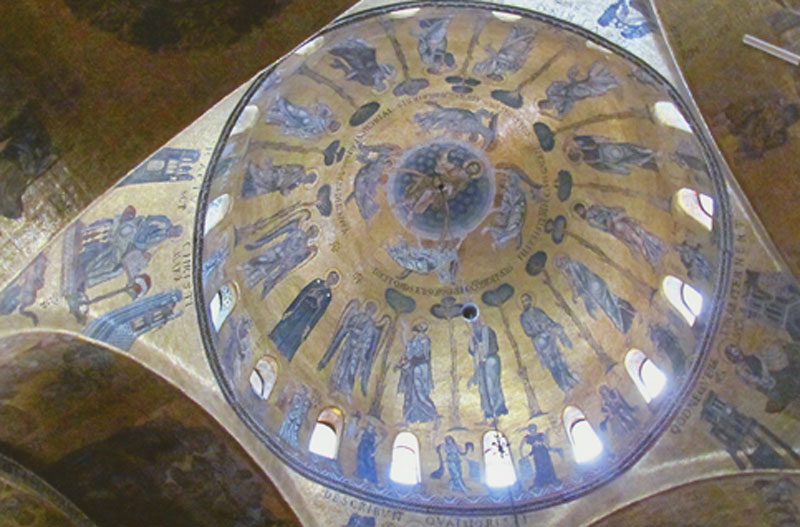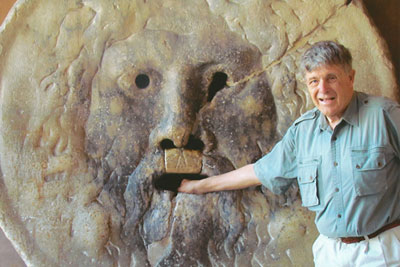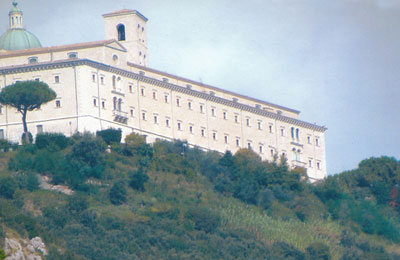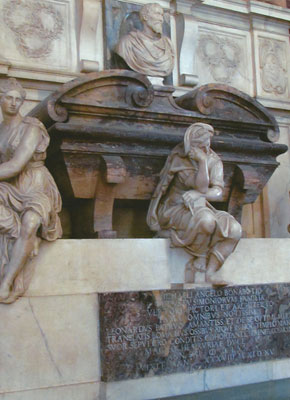Hitting the highlights in Italy
This article appears on page 44 of the August 2015 issue.
I traveled on a 12-day Trafalgar tour, “Italian Concerto,” in September 2014. The group consisted of 48 congenial participants, a couple of whom looked after me.
The tour
The pace of the itinerary was leisurely, with 10 hotel nights — three in both Rome and on the Amalfi Coast and two each in Florence and Venice. The benefit of a vacation containing no one-nighters lies in not having to pack and unpack your luggage too frequently.
In group travel, it’s often the tour director whose unique services and personality are responsible for rendering your vacation a memorable one. Giacomo Giamboi, our representative from Trafalgar (Anaheim, CA; 866/513-1995, www.trafalgar.com), was exceptional in managing our activities, and his advice and the unanticipated extras he arranged contributed greatly to the quality of our overall experience.
My cost totaled $5,256, including a single supplement, round-trip airfare from New York’s JFK on Delta Air Lines, travel insurance and transfers. (The single supplement was largely neutralized by discounts I received as a repeat client and on account of early payment.)
Not included in this amount were meals outside of those listed on the itinerary; optional excursions; gratuities for Giacomo, the coach driver and local guides, and sundry expenses.
Beginning in Rome
Our tour began in Rome, where we stayed at the UNA Hotel, in the vicinity of the central railway station. My room, like others in which I stayed in Italy, was snug, which was not unexpected given single occupancy.
Our group had breakfast in a spacious private room, thereby avoiding the long lines outside in the hotel restaurant.
On previous trips to Rome, my accommodations were in hotels located much closer to the historic district. However, staying at the UNA, within a block or two of Termini Station, where the two main metro lines (A and B) intersect, provided (at least, for me) an ideal setting for travel to minor locations not normally featured in either the included or optional sightseeing.
A highlight included in the Trafalgar itinerary was a visit to the Colosseum. Once the venue for gladiatorial combat, it was partially covered with scaffolding in preparation for restoration.
To explore Rome, I opted for a walking tour that covered such sights as the Trevi Fountain and the Pantheon, ending at Piazza Navona. My principal reason for not venturing out to the historic district on my own was because of the need to take the public transportation, otherwise known as the “pickpocket bus.”
For additional sightseeing on my own, I purchased a one-day metro pass (€6, or $6.75) at a newsstand, since my planned route included enough separate train rides to justify the flat rate.
Taking the B line south from Termini to the Piramide station (four stops), I arrived at a Roman gate and a pyramid, literally next to one another. Proceeding one stop north, I reached the Circus Maximus, the site of chariot races, then walked several hundred meters toward the Tiber River to the Mouth of Truth.
The Bocca della Verità, most likely the world’s very first lie detector, is located to the left of the portico of the church of Santa Maria in Cosmedin and was featured in “Roman Holiday,” Audrey Hepburn’s first major movie. According to legend, if you put your hand into the Mouth of Truth and tell a lie, it will bite your hand off!
Arriving back at Termini, I switched to the A line and proceeded north for three stops to the Spagna station to visit the Spanish Steps.
At the top of the steps is the church of Trinità dei Monti, in the process of restoration. The famous Villa Borghese and gardens, as well as the Via Veneto, perhaps Rome’s most fashionable street, are nearby.
On this occasion I lacked sufficient time to return to visit the Forum, but I would recommend this stellar piece of history without any hesitation.
Gastronomic research
There are many vendors in Rome selling gelato, the Italian version of ice cream. Research done before I departed from home revealed that if the gelato looks puffy, it has artificial thickeners; if the colors are too bright, there are added chemicals.
Fassi (Via Principe Eugenio 65), approximately a 20-minute walk from the Una Hotel, is reported to make gelato the old-fashioned way and claims to be the oldest gelateria in Rome. Reviews on TripAdvisor.com cited both low prices and generous servings.
For gelato in a cup, Fassi offered small, medium and large sizes. I opted for the medium portion, delivered in a good-sized cup, ordering a medley of vanilla, chocolate and pistachio, all of which were very good. I was pleasantly surprised to find that the price was only €2. There also were tables where you could sit and savor your purchase.
I had the occasion to sample gelato in Rome and other cities throughout Italy, and one of my favorite flavors was pineapple, which I discovered when Giacomo treated us to gelato at a shop in Piazza Navona.
I also researched through TripAdvisor.com a number of restaurants near my hotel and was most impressed by favorable reviews of Elettra (74 Via Principe Amedeo), a trattoria with reasonable prices located within two blocks of the hotel.
According to some, it is the best restaurant in the Termini area, if not the entire city.
Because of the tour schedule, my best option was lunch at Elettra after returning from the Mouth of Truth. Although the restaurant posted lunch specials outside, I ordered from the regular menu, choosing lamb with a wine sauce (€15).
Meat courses were priced from €8 to €22, with fish dishes falling within the same range, plus an extra charge for vegetables.
The restaurant was not that inexpensive, but my research found that it is easy to pay an average of €50 to €100 ($55-$110) for a meal in many restaurants in the city.
If I ever return to Rome, Elettra would be at the top of my list.
EDITOR'S NOTE: A few months after this letter was published, another reader (Ted Mullett of Vero Beach, Florida) informed us that Elettra had been closed several months before his November 2015 visit to Rome.
Vatican City
Trafalgar also provided — as another included highlight — a guided tour of Saint Peter’s Basilica and the immense piazza in which it sits.
Although I had been there before, this was my first introduction to Bernini, who was responsible for the bronze canopy above the altar. He also designed both Saint Peter’s piazza and the angels lining the Ponte Sant’Angelo, which stretches over the Tiber and leads to Castel Sant’Angelo, located on the Vatican side of the river.
A group of us toured, as an optional excursion, the Vatican Museum and the magnificent Sistine Chapel, which defies description. Our group was given access through a special entrance prior to the normal opening hour, so we avoided the crowds and long lines.
I was most impressed by the principal attraction of the Sistine Chapel, the ceiling painted by Michelangelo, a masterpiece. He also sculpted the Pietà in the basilica.
I was somewhat disappointed with the Vatican Museum portion of our visit, which merely consisted of walking down a long corridor to the Sistine Chapel. My album from a 2004 visit shows items not viewed on this occasion, although exactly what parts of the museum were entered at that time eludes my memory.
Photography (without flash) is permitted in the Vatican Museum, but under no circumstances is it allowed in the Sistine Chapel. This leaves the purchase of postcards as your only practical alternative for scenes from the chapel’s ceiling.
In the event that you crave more of Michelangelo, the Basilica of Saint Peter in Chains (San Pietro in Vincoli), in which his renowned sculpture of Moses is located, is a short distance by foot from the Colosseum.
Leaving Rome
After departing Rome, our group’s first stop of the day was the Allied soldiers’ cemetery at Monte Cassino, the final resting place for troops from Britain and the Commonwealth nations who gave up their lives during World War II.
High and majestic sits the Benedictine Abbey of Monte Cassino, perched atop a mountain, overlooking the cemetery with a watchful and sympathetic eye. All is quiet and tranquil now for those brave souls — a marked contrast to the unspeakable horrors they must have endured in the final moments of their lives. May they rest in peace.
Since this was my first time at Monte Cassino, I did not know what to expect. Although it had been my plan to visit the monastery, both time restrictions and the great uphill distance made this a nonviable option. I therefore had to be satisfied with a photograph.
Our afternoon was spent among the ruins of Pompeii, a UNESCO World Heritage Site.
On to the Amalfi Coast
The idyllic Amalfi Coast features unimaginable scenery and virtually endless photo opportunities. Some villages appear to have been chiseled from the mountain slopes.
We encountered many hairpin turns while ascending and descending the mountainous roads. There was an occasion when buses traveling in opposite directions caused a traffic jam, with vehicles lined up on both sides of the road.
Our hotel was the Pietra di Luna in the town of Maiori. The hotel had a serious problem with the elevator, which was constantly out of order. As an alternative to climbing stairs, we had to use the freight elevator.
Another annoyance was the toilet in my room, which, on one occasion, flushed and reflushed itself for the better part of half an hour while I was trying to sleep.
While in Maiori, three of us dined at Al Mare, a restaurant one or two blocks from the hotel. We all had the same meal, consisting of a salad of tomatoes and mozzarella followed by the fish of the day (an excellent sea bass) served with potatoes, along with a shared bottle of red wine, which also was extraordinary. The total bill amounted to €96, or €32 ($36) per person.
Although our meal certainly was far from inexpensive, the total incurred most probably would have been somewhat higher at a restaurant in a more popular tourist destination.
During our stay on the Amalfi Coast, I took an excursion to Ravello, perhaps the least commercialized town in the region, and also visited Positano and Amalfi. Travel between these towns is by way of roads that rise from the sea to the mountains.
At a café in Ravello some of us sampled blueberry juice (€4), which is produced farther north, upon the recommendation of Giacomo and our local guide. The reddish-purple beverage was very refreshing.
Positano
One gem on the Amalfi Coast is the town of Positano, containing dwellings built on the side of a mountain. This excursion was a separate option which, above all others, I did not want to miss. I had chosen Trafalgar because, although another tour operator likewise offered an itinerary without any one-night stays, this tour was the only moderately priced vacation that provided the opportunity to actually visit Positano, as opposed to offering a mere photo stop.
Dating from medieval times, Positano is among the most picturesque of places you will discover on the Amalfi Coast. The panoramic view of the town was well worth the cost of my excursion (€45). Among the noteworthy sights there was the Church of Our Lady of the Assumption (Santa Maria Assunta), which contains a black Madonna.
Giacomo provided each of us with a voucher to purchase either a gelato or a glass of limoncello. I chose the limoncello, a locally produced liqueur made from lemons. It was very tasty, though not quite as strong as other liqueurs.
Sightseeing in the town of Amalfi, after which the entire region was named, was part of our program before our scheduled departure for Capri.
The town’s cathedral is its main attraction. Built during the 10th century, it combines Baroque, Romanesque and Byzantine features, and it is the most impressive one I saw on the Amalfi Coast.
Capri and Florence
From Amalfi, the Trafalgar tour included ferry transfers to the isle of Capri and for the return to the mainland. Upon arrival on the island, we traveled by funicular to Anacapri, situated at a higher elevation than the village, itself.
Because we had to wait in the long line for the funicular, Giacomo bought each of us what he referred to as an orange slush at a stall in Anacapri — a very refreshing drink of crushed ice and lemon juice topped off with freshly squeezed orange juice.
There was an option to proceed by chairlift from Anacapri to the highest point of the island, and I elected to participate. Upon arrival at the top of the mountain we enjoyed spectacular views, including one of the sea and rock formations below, with a Roman statue in the foreground.
Leaving the Amalfi Coast, we proceeded to the “museum” of Florence for a 2-night stopover. You should understand that I employ this term not in jest but because so much art and culture are compacted into such a small area as to render the entire historic area, in effect, an open-air museum.
Our hotel in Florence was the Cosmopolitan, which, although my accommodations were satisfactory, was not centrally located. Rather, the hotel was in a nonprosperous and congested area with what appeared to be, at best, middle-class apartment buildings. A map obtained through Google before my departure indicated that it would take around an hour to walk back to the hotel from the city center.
Highlights in Florence included the Duomo and the adjacent Giotto’s Campanile; the Baptistry, which was in the process of being restored; Michelangelo’s “David,” at the Accademia, and the Palazzo Vecchio on the Piazza Signoria.
The Basilica of Santa Croce is a “must see” while in Florence, regardless of the €6 entry fee. The church serves as a who’s who of notable Italians, containing the tombs of Michelangelo, Galileo, Rossini and Machiavelli, among others.
While in Florence in 1978, I simply walked into the Uffizi, which contains works of art such as Botticelli’s “The Birth of Venus” and “Primavera,” alone worth the price of admission. Today, however, because of the gallery’s popularity, you must make reservations in advance in order to gain entry to the museum, or at least to avoid the seemingly endless lines.
My reservation to visit the Uffizi, made over the Internet prior to my departure from home, was for a specific time on my free afternoon in Florence. I opted to not order the audio guide. The charge was $28 plus an additional conversion fee.
I first headed for the Botticelli room and then viewed some other works of art, but because of the crowds and oppressively warm temperature inside the museum, I did not remain there as long as I had expected. (It was a surprise to learn that nonflash photography of the paintings was permitted.)
Lunch before walking over to the Uffizi was at Bar Perseo, on Piazza Signoria, located within the shadow of the Palazzo Vecchio. Two of us shared an appetizer consisting of a couple of oversized bruschette with prosciutto followed by a pizza Napoli, both of which were very good. The total check, inclusive of food and beverages, amounted to €33.
I cannot think of a more fitting location than the Piazza Signoria for a leisurely meal while in the historic center of Florence.
Venice
The final segment of our vacation was spent in Venice, with two nights at Hotel Continental, the back of which faces the Grand Canal. The hotel was originally a palace, constructed in the latter part of the 15th century.
My accommodations were the most comfortable of all the rooms assigned to me during the course of this trip; most probably, this evaluation was enhanced in large part because of the hotel’s historical significance.
Located near the railway station, the hotel is a short walk from the nearest site for boarding the vaporetto, or water bus, the most efficient mode of transportation in Venice.
Because the Trafalgar itinerary started our only full day in Venice with a glassblowing exhibition, something in which I had no interest, my choice was to take the vaporetto from the nearby Ferrovia station to San Marco (€7 each way). This mode of transportation provided a great way to view the Rialto Bridge along with other sights, including gondolas plying the Grand Canal oared by gondoliers wearing flat straw hats.
Upon arrival at Saint Mark’s Square, I was confronted with extremely long lines for entry into both the basilica and the Doge’s Palace. After a while, however, the partial flooding of the piazza from the tidal change caused the line for the basilica to become shorter.
Dinner on our first night in Venice was on our own. Giacomo had mentioned to us that some of the Venetian restaurants impose a cover charge of €12 per person, so he recommended Brek, a self-service restaurant located down the street from the Continental, which had no such charge. Several of us followed his advice.
My evening meal at Brek, totaling €17.50, started off with a good-sized salad of lettuce and tomatoes, which I made for myself with olive oil and balsamic vinegar, followed by a nice piece of fresh tuna cooked to order plus potatoes and a glass of red wine. I am certain that the total cost for a similar meal, inclusive of gratuity, would have been much higher in a more traditional restaurant with wait service.
I was on my own while in Saint Mark’s Square at lunchtime during the final afternoon of the tour, and I chose Ristorante Quadri, with outdoor tables right on the piazza. My meal consisted of an interesting sandwich called Tramezzino Nonno Vittorio, containing a concoction of baccalà (salt cod) and anchovies plus other ingredients on white bread, served with a small glass of ice water, at a cost of €14. Soft drinks were priced at €10, cappuccino at €11 and a glass of wine at €10 to €15, which caused me to decide that I was not quite as thirsty as I had thought.
You may feel that my meal was overpriced, since a sandwich elsewhere in the same vicinity would have cost substantially less, but I was at the center of Piazza San Marco having a leisurely meal, replete with the opportunity for relaxation and people-watching, which made my time at Quadri a most satisfying experience.
Final comments
If you were to ask me if Rome, the Amalfi Coast, Florence or Venice was my favorite, I would merely respond “Yes.” Each of these destinations contained unique characteristics that contributed to an enjoyable time in Italy, so it would be virtually impossible for me to single out any one of them.
My trip was both a rewarding experience and an addition to my overall education regarding societies throughout the world. Considering, most importantly, the friendliness of the other tour members, I would rate this vacation as among the top tours I’ve taken in my more than 40 years of travel.




